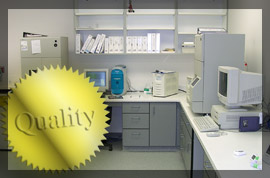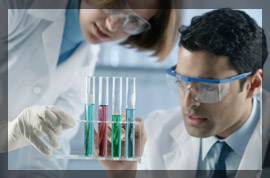Home | Glossary | Resources | Help | Contact Us | Course Map
Archival Notice
This is an archive page that is no longer being updated. It may contain outdated information and links may no longer function as originally intended.
The prosecutor should have the DNA analyst list the many uses of DNA outside the forensic community (medical, missing persons identification, etc). The DNA analyst can also discuss how DNA has assisted in the exoneration of individuals accused of a crime and may be able to discuss the rate of exclusion of suspects at the DNA analyst's laboratory. Where appropriate, it may be stressed that the process of testing done for the exoneration is the same as that used in the case at hand (STR typing) and the same instruments, kits, techniques etc. were used, thus stressing the reliability not just of DNA typing but the exact typing used in the prosecutor's case.
The DNA analyst should be questioned about the DNA laboratory facility, including whether the lab meets national testing standards, as required by the American Society of Crime Lab Directors – Laboratory Accreditation Board (ASCLD-LAB), and/or participates in the Federal Bureau of Investigation's Combined DNA Indexing System (CODIS). The DNA analyst should describe the quality assurance standards employed in the testing lab itself. Prosecutors should be aware that there are laboratories that do adhere to national standards of quality assurance but have not been certified by ASCLD-LAB.
After educating the jury on the reliability of DNA and testing procedures, the prosecutor should question the DNA analyst on the testing done in this specific case. The DNA analyst should describe the chain of custody whereby the DNA samples came under the DNA analyst's exclusive control during the DNA testing procedures. Additionally, the DNA analyst should describe the necessity for obtaining a control sample taken from the victim and/or suspect and/or scene (including any non-human DNA) for comparison purposes.
The expert should explain that DNA was extracted from both the evidence and control samples using sophisticated scientific testing equipment for comparison purposes, and the comparison yielded a:
- Match or
- Exclusion or
- Inconclusive results
|
Examples of how DNA is used outside the forensic community include: |
|
Additional Online Courses
- What Every First Responding Officer Should Know About DNA Evidence
- Collecting DNA Evidence at Property Crime Scenes
- DNA – A Prosecutor’s Practice Notebook
- Crime Scene and DNA Basics
- Laboratory Safety Programs
- DNA Amplification
- Population Genetics and Statistics
- Non-STR DNA Markers: SNPs, Y-STRs, LCN and mtDNA
- Firearms Examiner Training
- Forensic DNA Education for Law Enforcement Decisionmakers
- What Every Investigator and Evidence Technician Should Know About DNA Evidence
- Principles of Forensic DNA for Officers of the Court
- Law 101: Legal Guide for the Forensic Expert
- Laboratory Orientation and Testing of Body Fluids and Tissues
- DNA Extraction and Quantitation
- STR Data Analysis and Interpretation
- Communication Skills, Report Writing, and Courtroom Testimony
- Español for Law Enforcement
- Amplified DNA Product Separation for Forensic Analysts



